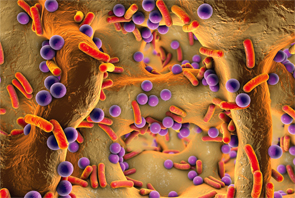
The discovery of the pivotal role of the human microbiome has challenged some of the long-held anachronistic views that considered all infectious agents to be evildoers.
Kateryna Kon/shutterstock.com
Which came first? The infectious microorganism or a host’s immune resistance against it?
Through the millennia, a raging battle has pitted the hordes of infectious agents surrounding us against, arguably, the most complex biologic structure ever created, the finely tuned human immune system. The stakes are high for both sides. For the infectious agent, an inability to penetrate the host defenses may lead to its imminent demise and an untimely death. For the host, letting its guard down can lead to some dire consequences including infection, illness or, if molecular mimicry holds true, the development of autoimmunity.
Yet life on our planet as we know it would cease without the presence of these pesky bugs. In fact, the discovery of the pivotal role of the human microbiome has challenged some of the long-held anachronistic views that considered all infectious agents to be evildoers. It may be hard to conceptualize that lurking within each and every one of us resides a population of well over 100 trillion bacteria, or 10-fold the number of cells in our bodies, that is estimated to weigh 5 lbs.1 These massive colonies of bacteria and their infinite generations of progeny have taken up lifelong residence within our gut, oral cavities, skin, lungs, eyes and elsewhere. Till death do us part.
What are they doing within? Some, if not most of these organisms bear no malice and contribute to our host defenses in most meaningful ways. For example, we are discovering their pivotal role in the pathogenesis of cancer, rheumatoid arthritis, inflammatory bowel disease and a host of other autoimmune diseases.2
In a similar vein, the human virome, the virtual home for all viral vectors lurking within, exerts its own profound influence on our lives in times of health and disease. Given the nanoscale size of viruses and their infectious snippets of DNA and RNA, it should come as no surprise to learn that the number of free virions just residing at body barrier sites, such as the gut, oropharynx and skin, may range as high as 109 particles per gram. Step aside, microbiome: It has been estimated that the human body may contain an eye-popping 1015 bacteriophages that regulate the structure and function of bacterial communities through their lytic and lysogenic cycles.3 Don’t forget to pass the hand sanitizer.


